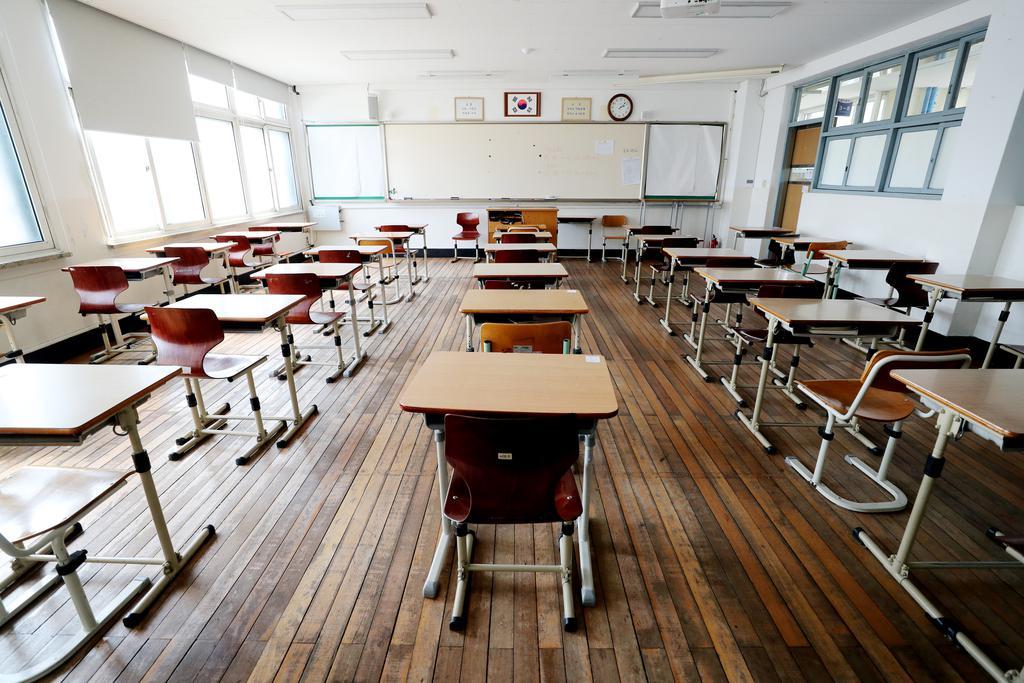How COVID-19 changes classrooms: the case of South Korea

(Yonhap)
SEOUL — Thermal cameras, transparent dividers in cafeterias, masks and disinfectants in classrooms: These are some of the changes Korean students are to face in the era of COVID-19 as they return to school on May 13.
With a marked slowdown in new infections and the easing of social distancing nationwide, students will go back to school in phases after 72 days, starting with high school seniors. The spring semester already began in April, though entirely with online classes.
“Schools cannot go back to the times before the COVID-19 outbreak,” said Education Minister Yoo Eun-hae on Monday, announcing the schools’ phased reopenings from May 13 through June 1.
To minimize the risk of infections at school, physical distancing among students and maintaining personal hygiene are of the highest priority.
Before students go to school, they need to fill out a checklist on their health conditions – whether they have a high fever, respiratory symptoms and so on. Thermal cameras are installed at the school entrance. Upon arrival at school and before they have lunch, students get fever checks. Those who have fevers higher than 37.5 degrees Celsius or respiratory symptoms are first separated and then tested for the virus at nearby clinics.
Article continues after this advertisementIt takes only one confirmed patient for a school to close down again. When one person becomes infected with the virus, the school is closed and turns again to online learning. Everyone at the school should self-quarantine for two weeks. Health authorities also would conduct an epidemiological investigation into the school.
Article continues after this advertisementEveryone at schools should keep their masks on at all times. Hand sanitizers, thermometers and face masks are stocked in every classroom. Nearly 100 percent of schools have finished putting into place quarantine measures to welcome back students, according to the Education Ministry.
Class sizes will be smaller, with all students sitting alone and each desk placed some 2 meters apart from others. Each class will go to school, take a break and have lunch at different times. Activities involving a group of students and moving between classes are discouraged.
At cafeterias, students get lunch at different times. They line up 1 meter apart from each other to be served. Partitions are installed on tables and students all sit in rows or a zigzag pattern so that they don’t face each other. The cafeteria is disinfected after students finish the meal.
Students in the second year of high school, third year of middle school and first two years of elementary school will go back to school on May 20. On May 27, in-person classes will resume for students in their first year at high school and second year at middle school and in third and fourth year at elementary school. Schools will reopen for the rest on June 1. Kindergartens will open on May 20.
The reopenings come amid lingering concerns that classrooms can become breeding grounds for a new wave of novel coronavirus infections, given a more expansive web of contacts made at school.
The COVID-19 risk that children are exposed to and pose to the community – from whether children are less likely to catch the coronavirus to how easily they can transmit the virus to others – is still not known.
Jeong Eun-kyeong, director general of the Korea Centers for Disease Control and Prevention, also warned that there is still a possibility of infections in reopened schools though it is “not high.”
The reopening of schools should not be viewed as the end of the outbreak, Education Minister Yoo said, urging teachers, parents and students to remain vigilant.
“The virus risk is not gone. But we must strive to find a balance in quarantine and life,” she said. “Schools must build a new educational system in which our students are safe both at home and at school.”
For more news about the novel coronavirus click here.
What you need to know about Coronavirus.
For more information on COVID-19, call the DOH Hotline: (02) 86517800 local 1149/1150.
The Inquirer Foundation supports our healthcare frontliners and is still accepting cash donations to be deposited at Banco de Oro (BDO) current account #007960018860 or donate through PayMaya using this link.